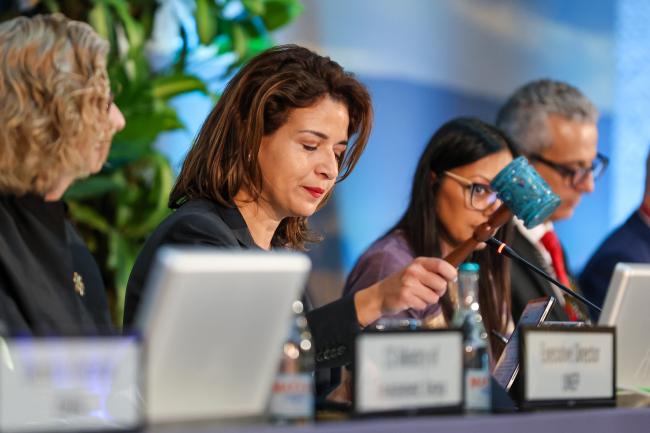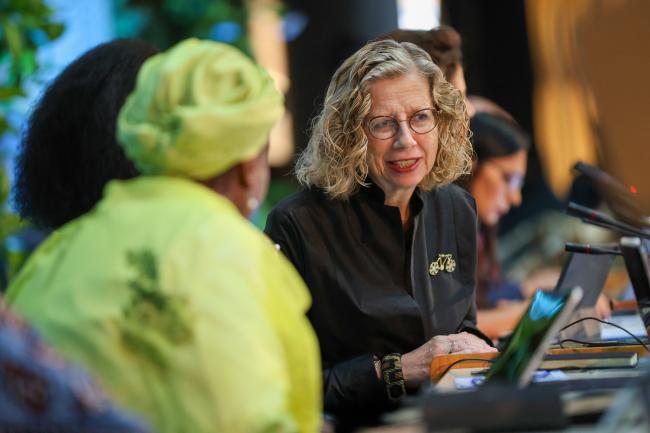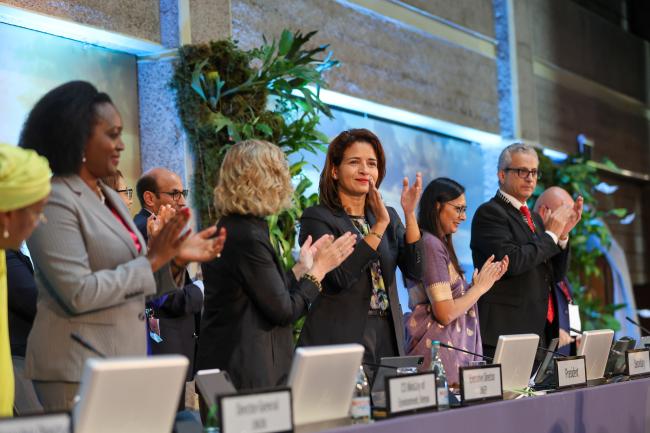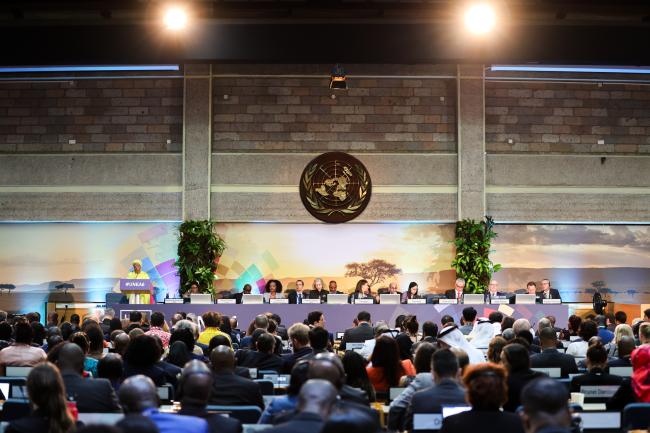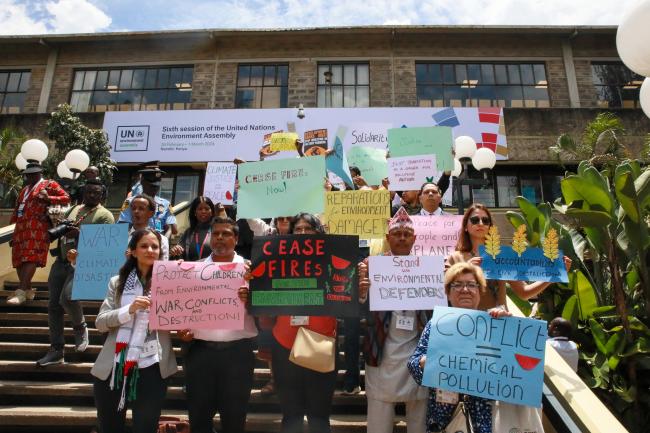Since the start of the COVID-19 pandemic that ravaged the world, there was an anxiousness to declare the pandemic over and hasten to a return to normalcy. But a number of false starts, new mutations of the virus, and spikes in cases meant that environmental negotiations – while resuming in person – were still fraught with controls, tests and masks. This session of the United Nations Environment Assembly (UNEA) marked a clear emergence from the pandemic with the famed United Nations Environment Programme (UNEP) campus packed with a record number of delegates unable to socially or even politely distance as they elbowed their way into plenary.
Want to dig deeper into today's talks? Read the full Earth Negotiations Bulletin daily report.
With the cultural opening of the meeting by the Kenyan Boys’ Choir, music echoed in the halls and around the grounds, followed by jubilant speeches and opening statements by delegations. UNEA-6 President Leila Benali stated that this meeting should be centered around three inflection points: the major conflicts happening around the world; the historic number of general elections that will take place in countries possibly leading to a stronger resurgence of populist movements; and an opportunity to restore trust in multilateralism and humanity. Inger Andersen, Executive Director, UNEP, reinforced this message, noting that in past UNEAs the world was watching, but at this UNEA, the world has descended upon Nairobi.
With the record number of participants at UNEA-6, one cannot help but evoke the oft-repeated observation of late UN Development Programme dedicated staff member, David Lockwood: “The UN is a reflection of the world. If countries cannot agree, the UN cannot act.” At UNEA-6, resolutions reflected are indeed a reflection of the world as it stands today: countries will negotiate text on armed conflicts, climate justice, resource support to the Global South, and solutions to adapt and mitigate to the triple planetary crisis – whether through the promotion of circular economy, air quality measures, protection of the ocean and seas, or strong synchronization of UNEA with existing multilateral environmental agreements.
How Member States work towards resolving differences in the resolutions being negotiated at UNEA-6 will perhaps be a precursor of what the world can expect in 2024 as we center on the three inflection points mentioned by the UNEA-6 President Leila Benali.
To receive free coverage of global environmental events delivered to your inbox, subscribe to the ENB Update newsletter.
All ENB photos are free to use with attribution. For UNEA-6 and OECPR-6 please use: Photo by IISD/ENB - Mike Muzurakis
Committee of the Whole and Contact Groups
Multilateral Environmental Agreements Exhibition Opening
Between Sessions

From L-R: Inger Andersen, Executive Director, UNEP; Roselinda Soipan Tuya, Cabinet Secretary, Ministry of Environment, Climate Change and Forestry, Kenya; and UNEA-6 President Leila Benali, Morocco

Petr Antipov and Dmitry Maksimychev, Russian Federation, conferring with Radhika Ochalik, Secretary, Governing Bodies and Stakeholders, UNEP

